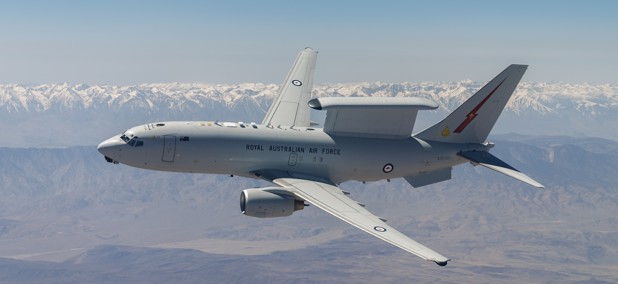Funding for the U.S. Air Force’s E-7 Wedgetail radar jet has been secured in a bipartisan agreement aimed at ending a government shutdown that lasted for 41 days. The deal, reached on the evening of October 15, 2023, includes a provision of nearly $200 million dedicated to “continued rapid prototyping activities” for the E-7 program. This funding is crucial for maintaining the program’s schedule and transitioning to full production.
The inclusion of the E-7 Wedgetail in the continuing resolution reflects ongoing legislative support for the aircraft, despite the Air Force’s intention to reduce its funding. The agreement will provide government funding through January 30, 2024, while Congress works on longer-term appropriations. Senator Susan Collins, a Republican from Maine and chair of the Senate Appropriations Committee, expressed optimism, stating, “I look forward to voting for this legislation and ending the unnecessary harm to the security of our families and our nation.”
While the agreement is a positive development for Boeing, the manufacturer of the Wedgetail, it faces procedural hurdles before finalization. A company spokesperson declined to comment on the recent funding measure, and the Air Force did not respond to inquiries regarding its position on the E-7 program.
The ongoing support for the E-7 radar jet contrasts sharply with the criticism from Defense Secretary Pete Hegseth, who has questioned the aircraft’s survivability in modern combat scenarios. Furthermore, the Air Force’s budget request for 2026 includes plans to cut funding for the E-7, raising concerns among defense experts about the future of the program.
According to Todd Harrison, a defense budget expert with the American Enterprise Institute, the inclusion of the E-7 demonstrates that lawmakers are wary of the Space Force’s capability to swiftly deploy its Airborne Moving-Target Indication (AMTI) systems. “If it passes, this is a big win for Boeing, and it shows that many in Congress still have doubts about how quickly the Space Force can deploy the AMTI system it funded in the reconciliation bill a few months ago,” Harrison noted.
Hegseth has previously stated that platforms like the E-7 are “not survivable in the modern battlefield” and do not provide a strategic advantage for future conflicts. Additionally, defense officials have indicated that the program could be cut due to significant delays and cost increases. The E-7 is intended to replace the aging E-3 Sentry aircraft, with an agreement last year for two test planes to be delivered in 2028 at a cost of $2.6 billion. These costs have surged by $884 million, a 33 percent increase, as reported by the Government Accountability Office.
In a recent statement, the British government confirmed that the two E-7 prototypes will be constructed in the United Kingdom, further highlighting the international collaboration on this defense initiative. As Congress navigates the complexities of defense funding, the future of the E-7 Wedgetail remains a focal point in discussions about U.S. military capabilities.






